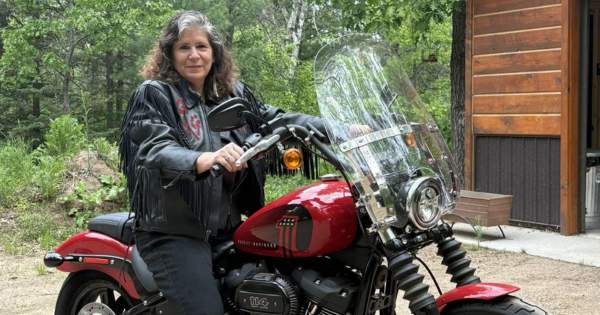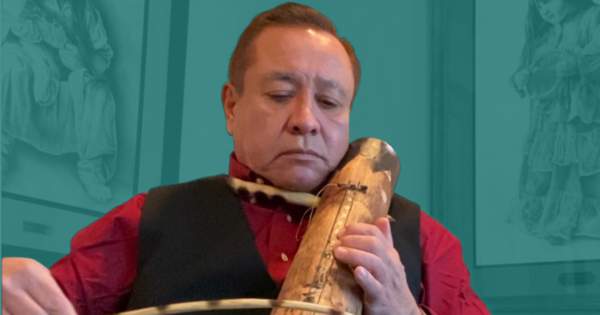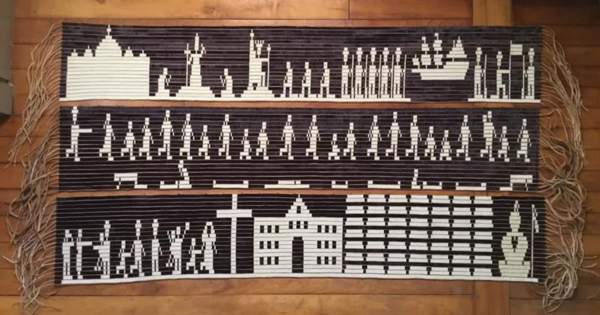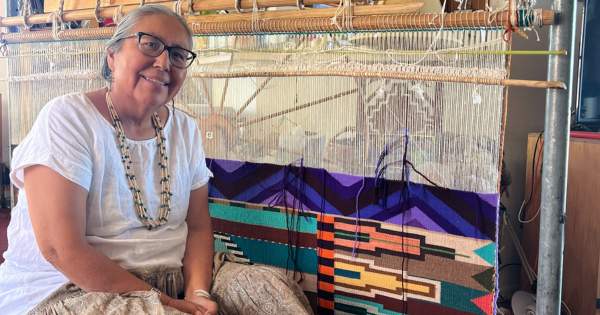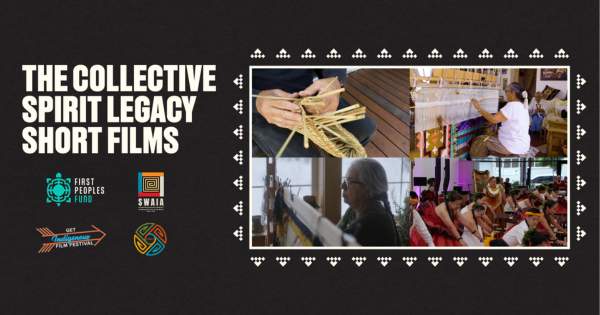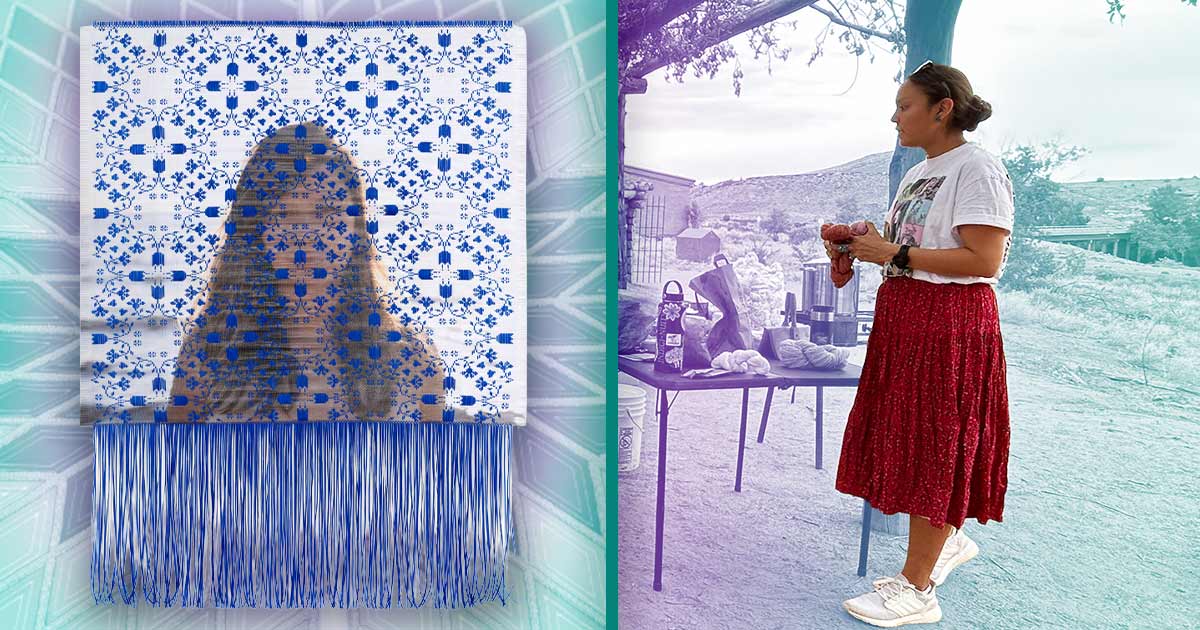
Origin Stories
Kevin Locke is an internationally-recognized master traditional folk artist, visionary hoop dancer, indigenous Northern Plains flute player/recording artist, cultural ambassador, and an educator. A citizen of the Standing Rock Sioux Tribe, and coming from the ancestral line of Lakota and Anishinabe, he self-identifies as a World Citizen.
Locke is a 2021 Cultural Capital Fellow and he’s thankful for the opportunity. Locke went 14 months without any financial means during the pandemic lockdowns. “I felt so fortunate to have support,” says Locke. “Even though everything's on lockdown, you can't shut yourself down.”
Kevin Locke discusses his origin story, artistic mentors who shaped him, and a shocking fact about the origin of the Native American flute.
***
This interview has been edited for length and clarity.
Your creativity spans several mediums, including music, dancing, and storytelling. What is the origin of your art-making practice? Is there a specific moment when you realized you were an artist?
As a little kid I loved to draw all kinds of artwork. I had an inclination to create all kinds of things. It didn’t matter if it was with pencil and paper, or making things outside. But as a teenager, I read about the Institute of American Indian Arts (IAIA) and applied back when it was a high school in 1969. It's been almost 50 years since I graduated from IAIA. But I didn't have a specific [artistic] focus at the time. Instead, I learned from great artists like sculptor Allan Houser (Chiricahua Apache), poet Barney Bush (Shawnee/Cayuga), and artist and designer Lloyd Kiva New (Cherokee).
Was it helpful to be surrounded by other Native artists during your formative years?
Yeah, I really think so. I didn't really have an artistic focus at all. Then I started learning flute music. My original mentor was Richard Fool Bull (Rosebud Sioux Tribe), and he was my main source of encouragement. He was a centenarian, so he was born in the 1870s. That's how I was introduced to the Indigenous flute
Speaking of, you’re a respected and well-known flute player. How has flute playing changed over the years?
In 1983 or 1982, a German American named Michael Graham Allen invented the Native American flute. It's based on the Japanese wind instrument called a shakuhachi. I asked Allen why he did that. He said he made an original Indigenous flute but he didn't know how to market it. He came upon this tuning system based on the Japanese shakuhachi and renamed it as a Native American flute. Then R. Carlos Nikai (Navajo, Ute) recorded albums using the instrument and his albums went platinum. Pretty soon, everybody all over the world got interested in this instrument. But it’s not an Indigenous North American musical aesthetic. It's basically Japanese. But the beautiful thing about it — and I'm not knocking it, I'm just saying people need to be aware where this instrument comes from — it uses a beautiful scale called a minor pentatonic scale, and it really lends itself to improvisation. So people can just pick it up and play any kind of random assortment of notes on it.
And the instrument sounds so good! There are thousands of Native American flute music recordings that are just improvisational. I don't want to discredit the music. I think it's a great thing, but it has nothing to do with Indigenous tradition.
That in itself is a problem because the original genre associated with the Indigenous flute is a classic poetic or literary style that comes from the woodlands in the Great Lakes area, Northern Plains, and Southern Plains. And it existed for so many generations because the genre has characteristics that are uniform across most of North America. It’s a formulaic compositional pattern, even though the songs are diverse within themselves.
That’s so wild. First, I didn’t know the history of the Native American flute. Initially I had mixed feelings about its non-Indigenous origins. But what I’m hearing is that this musical instrument lifts your creativity. Is that accurate?
Yeah.
I think that’s fantastic. I’m wondering, then, what have you learned about yourself as an artist? You are a multidisciplinary artist, so how has your art changed you as a human being?
You know, I have to tell you that I make a livelihood through school presentations and I really love the audience. A school is perfect because you have a captive audience of elementary students. And they can’t escape! [laughs] All kidding aside, I do have a great time with them because it’s interactive and participatory. So I use my music and storytelling to teach songs [to the youth] and I enjoy it.
And I hoop dance, too. I've been dancing for 42 years.
I’m guessing you’ve participated at the World Championship Hoop Dance Contest at the Heard Museum in Phoenix, Arizona?
You know what, I've never entered any kind of contests. I like contests. I think it's the greatest thing because it encourages excellence. It doesn't matter what kind of contest. Whether it's dancing or singing at powwows, you’ll see people that are so proficient, just like world-class athletes. Regalia, for example, encourages beautiful craftsmanship, and the artists create all that beauty.
I have nothing against contests but it’s not for me. I'd be overthinking if I’m better than my competition, or I'd start thinking about what the judges thought of me. I don't want any stress. And I don't have to compete with anybody. I just compete with myself. For instance, I was working on this song and I went out for a run. Outside, everything is all open. Eagles fly around. And that's how I get my inspiration.
That’s great advice because the pressure in competitions sometimes is distracting. What other advice can you share with young Native artists?
No matter where you are, spend time outside for inspiration. It's like when I run laps around an old village nearby and I pretend I can smell soup cooking. And I can hear children laughing. I hear people talking. And I can almost smell a campfire. It’s like being in touch with the spirit, you know? Holy souls walk upon this land, the great teachers that inspire the people. And that inspiration was expressed by them long ago through their music and dancing. It comes down intergenerationally. So, even though the ancestors are not here, we can fulfill their dreams on their behalf. And that comes through our own artistic expressions.
***
Learn more about Kevin Locke on his website, and follow him on Instagram and Facebook.

